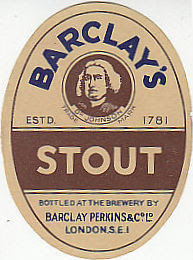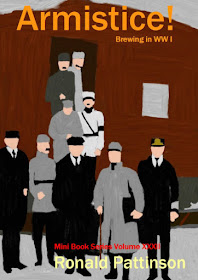I'm particularly interested in the section on cellarmanship. Partly because I know how much trouble there was keeping cask beer in good condition in the early 1920s.
Before WW I, pretty much all draught beer in London was over 5% ABV. Meaning it wasn't going to sour all that quickly, even if not particularly well handled in the pub. After the big fall in strength during WW I, most draught beer was 4% ABV, or even less. And was consequently much more prone to spoiling. Making good cellarmanship vital.
Let's kick off with something about cask sizes:
"Casks of beer are usually in four sizes: hogsheads, containing fifty-four gallons; barrels, containing thirty-six gallons; kilderkins, containing eighteen gallons; and firkms, containing nine gallons.The four basic sizes of casks remain the same, though hogsheads are pretty much extinct today and barrels are rare. Large pubs now get their beer in firkins, normal ones in firkins and small ones even in pins. That's quite a downgrading.
In some places, and in home-brewing houses, a Tierce is used containing forty-two gallons.
In houses where the trade is large and quick, beer is generally supplied in hogsheads; where it is normal, in barrels; where small, in kilderkins; firkins are more often used for "off" or family trade. Butts, holding one hundred and eight gallons, and puncheons, holding seventy-two, are rarely if ever used nowadays, even for porter."
"The Art and Practice of Innkeeping" by Alexander Francis Part, published by Heinemann London, 1922, page 198.
When I started drinking ion the early 1970s, some of the larger regional breweries in the North and the Midlands still delivered in hogsheads and the bulk of their beer was in barrels. Does anyone still deliver in barrels today?
The "off" trade is referring to off-licences selling draught beer. Back in the 1970s, there were still offies in Leeds selling Tetley Bitter and Mild this way. The family trade means people buying casks for at home. Though by the time this book waswritten, that practice was dying out as drinkers switched to bottled beer which was less fuss.
I've never come across a tierce in any brewing records. I suspect they weren't very common. But Part does exclude one cask size I've seen very regularly: a half hogshead. These were commonly used in Scotland for beer that was sent out to independent bottlers for bottling.








